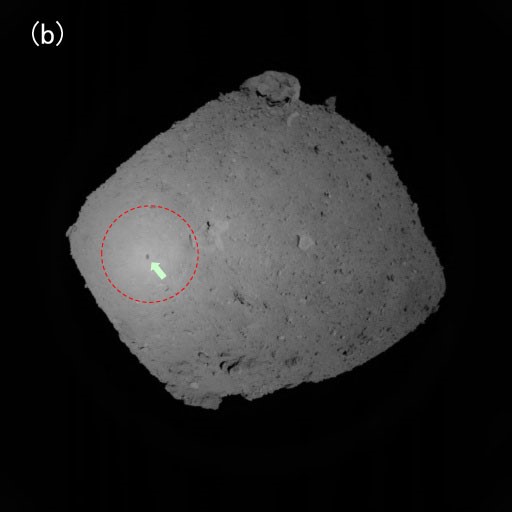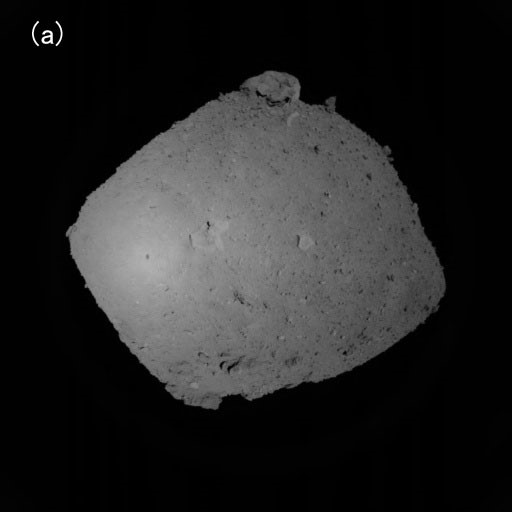Japan's Hayabusa2 Sees Its Shadow on Asteroid Ryugu in New Photos
Hayabusa2's shadow is visible on asteroid Ryugu in new pictures, taken during a dress rehearsal to prepare the spacecraft for deploying a lander in October.
In October, Hayabusa2 will deploy its Mobile Asteroid Surface Scout (MASCOT) rover at a zone in the southern hemisphere nicknamed MA-9. During its mission at Ryugu, Hayabusa2 will deploy several rovers and perform some touchdowns itself.
The small dot-like shadow popped up during activities between Sept. 10 and 12, Japanese Aerospace Exploration Agency (JAXA) officials said in a statement. The spacecraft went down to an altitude of nearly 2,000 feet (about 600 meters) and took navigational images with its optical navigation camera.

The shadow was created due to a phenomenon called the "opposition effect," JAXA officials said. This happens when the angle between the sun, the surface of a celestial body and the observation point are close to zero. When this situation happens, "the sunlight is behind the spacecraft, casting the shadow on the asteroid," JAXA said.
The opposition effect also showed up in spectacular form when Hayabusa, the predecessor spacecraft to this mission, took a picture of its own shadow in 2005 on asteroid Itokawa. That image clearly showed the spacecraft body, as well as the solar panels that powered Hayabusa.
"If we approach Ryugu still closer, we should see the shadow of Hayabusa2 [as] clearly as with the shadow of Hayabusa," JAXA added. "This may be what we see on our next approach."

The $150 million Hayabusa2 mission arrived at Ryugu on June 27 and is expected to study the 3,000-foot-wide (950 meters) asteroid for 16 months. Hayabusa2 is scheduled to leave Ryugu in December 2019 and return samples to Earth in December 2020.
Get the Space.com Newsletter
Breaking space news, the latest updates on rocket launches, skywatching events and more!
NASA also has an ongoing asteroid project of its own called OSIRIS-REx (Origins, Spectral Interpretation, Resource Identification, Security, Regolith Explorer). The spacecraft is now on its final approach toward asteroid Bennu and is expected to reach orbit there in December. Like Hayabusa2, OSIRIS-REx will return samples to Earth, but those will come in September 2023.
One large goal of returning asteroid samples to Earth is to help scientists learn about what asteroids are made of, which give clues about the early history and subsequent evolution of the solar system. Space rocks may also have been vital to Earth's life, especially in bringing water, organic materials and other life-friendly ingredients to our planet.
Follow us @Spacedotcom, Facebook and Google+. Original article on Space.com.
Join our Space Forums to keep talking space on the latest missions, night sky and more! And if you have a news tip, correction or comment, let us know at: community@space.com.

Elizabeth Howell (she/her), Ph.D., was a staff writer in the spaceflight channel between 2022 and 2024 specializing in Canadian space news. She was contributing writer for Space.com for 10 years from 2012 to 2024. Elizabeth's reporting includes multiple exclusives with the White House, leading world coverage about a lost-and-found space tomato on the International Space Station, witnessing five human spaceflight launches on two continents, flying parabolic, working inside a spacesuit, and participating in a simulated Mars mission. Her latest book, "Why Am I Taller?" (ECW Press, 2022) is co-written with astronaut Dave Williams.









